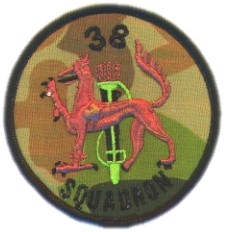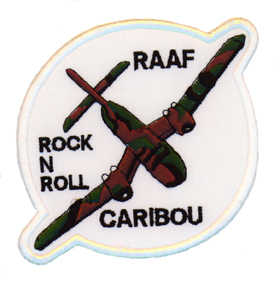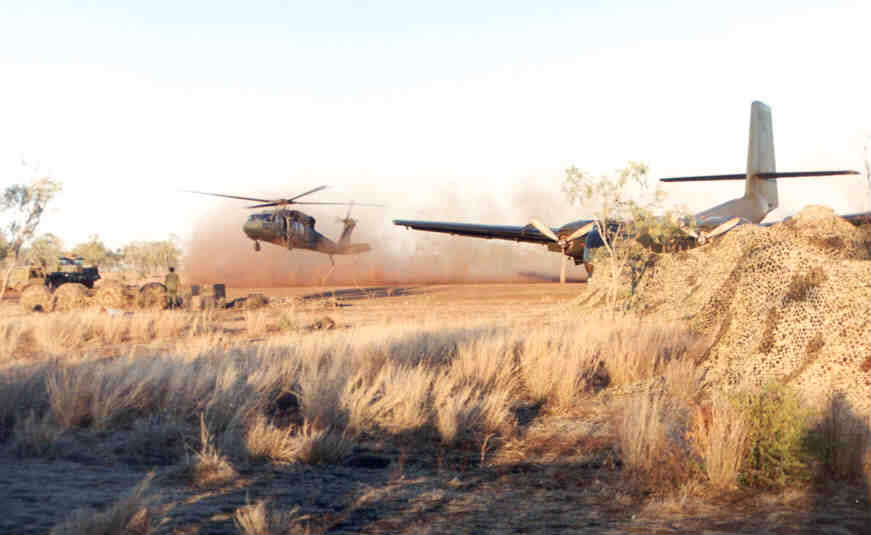 Royal
Australian Air Force
Royal
Australian Air Force 
Newest data shown in red Updated March 30, 2018
38 Squadron
|
38 Squadron was the largest flying squadron in the RAAF and is one of the oldest and most experienced transport squadrons. it was one of the few remaining flying squadrons in the RAAF with its own organic servicing, equipment and administrative personnel. It was formed at RAAF Base, Richmond, with Lockheed Hudson MKIV aircraft on 15 September 1943, and was re-equipped with Douglas Dakota (DC3) aircraft in 1944 and de Havilland (Canada) Caribou in 1964. The squadron has an impressive history of operational tasks including the Berlin Airlift, the Japan courier service, and the Malayan emergency action; operations in the South West Pacific, Western Pacific and East Indian Ocean war zones throughout 1944 and 1945 (a 38SQN Dakota was the first RAAF aircraft into Singapore in August 1945, following the Japanese surrender(; the training of ground and air crews and feeder squadron for the re-formed 35 sister squadron during the Vietnam conflict and operations from 1965 to 1975 supporting the Pacific Islands Regiment in Papua New Guinea. Other tasks included survey/mapping operations for the Indonesian Government in Sumatra, West Irian and the Moluccan Islands; mercy missions in aircraft with International red Cross markings in Portuguese Timor and peace-keeping tasks in aircraft with United Nations markings in India and Pakistan, patrolling the ceasefire line in Kashmir. As well as the standard transport role, the squadron has been involved in many national commitment tasks in Australia. These include flood relief, cyclone relief, bush fire patrols, search and rescue, medical mercy flights, fisheries surveillance, rainmaking experiments and grasshopper plaque eradication. Normal squadron operations involve tasks throughout Australia. However, squadron operations have encompassed Pakistan, Indonesia, Papua New Guinea and New Zealand. Although the squadron now forms part of the Tactical Transport Group (headquartered in Townsville) the unit operates from Amberly. Aircraft and crews are maintained at appropriate states of readiness to react in defence of Australia or to assist the civil community in times of need. The venerable caribou was one of the work horses to the RAAF. |


Patches from the Royal Australia Air Force (RAAF) 38th Squadron
 Thanks to John (SAMBO) Sambrooks for this photo |
| The photo above is of the first training class of the RAAF. This class was conducted in January and February at the deHavilland facility in Downsville, Canada. The aircraft in the background is A4-164 (it was in the second flight with A4-152 and A4-159). The first three aircraft to depart Canada were A4-134 - A4-140 and A4-147 on March 17, 1964. They were equipped with long range auxiliary tanks for the 15,000 miles/25,000 kilometre flight. The stop over or refueling route were Downsville/Gander (Canada) /Laques (Portugal) / Gibraltar / Luga / El Adem (Libya) / El Masirah (Oman) / Karachi / Calcutta / Butterworth (Malaysia) / Djakarta (Indonesia) / Darwin / Alice Springs and arrived at RAAF Richmond Air Base , New South Wales on April 22, 1964. Total flight time was 97 hours. |
 |
| Second ferry
crews that flow A4-152, 159, 164 departed Canada on May 8,
1964 arriving at Richmond Air Base on June 13, 1964.
(RadSchool Magazine vol 61 via RTFV 35
Squadron Association) Standing L-R: Owen Murrell (Loady), Wally Patterson (Nav), Brain "Ric" Richards (Loady), John Staal (Pilot), Keith "Red" Jordan (Nav), Don Pollock (Pilot) Seated L-R: Des Lovett (Pilot), Barry Ingate (Loady), Ron Raymond (Captain), Chris Sugden (Co-Pilot), Bernie Parker (Pilot), Bev Barry (Nav) |
|
Photos taken at the Downunder Airshow in Avalon, Australia in Febraury, 1999 Caribou # A4-199 is from the RAAF 38 Sqn based at RAAF base at Amberly, Queensland . Many thanks to FSGT. Geoff "CHOOK" Swanson and SGT. Andrew "Budge" Newman |
Click on photos to enlarge - All photos taken by Wayne Buser
| The following photos were taken by Glenn Alderton in 1993. When the RAAF 38 Squadron Caribous moved from their location at Richmond NSW to Amberly QLD, he was lucky enough to fly in the lead aircraft of a 12 ship formation for a 4 hour flight sitting on the back ramp for but 20 minutes. Glenn has taken over 450 great photos of RAAF aircraft and aviation in Australia. Check out his photos at: http://www.airliners.net/search/photo.search?photographersearch=Glenn%20Alderton |
|
|
 |
 |
 |
 |
 |
 |
 |
 |
 |
 |
 |
 |
 |
 |
 |
 |
 |
 |
 |
 |
 |
 |
 |
 |
 |
 |
 |
 |
 |
 |
 |
 |
 |
 |
 |
 |
 |
 |
 |
 |
 |
 |
 |
 |
 |
 |
 |
 |
 |
 |
 |
 |
 |
 |
 |
 |
 |
 |
 |
 |
 |
 |
 |
 |
You are on RAAF Caribou Section 5 page 1
| Return to main Caribou page |










